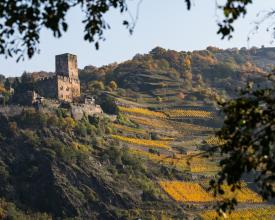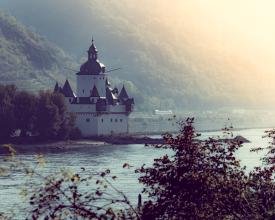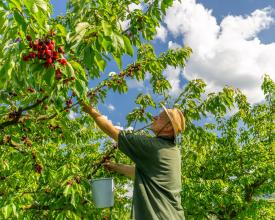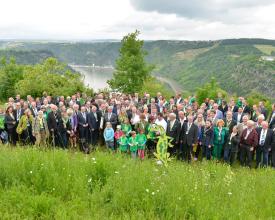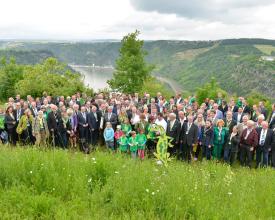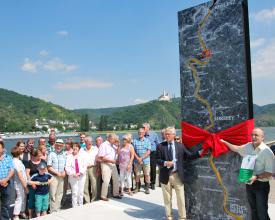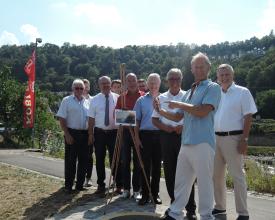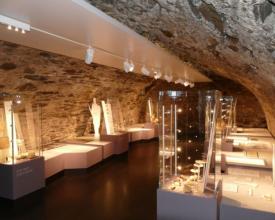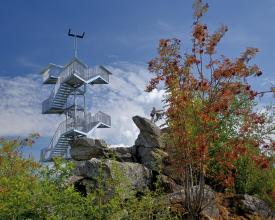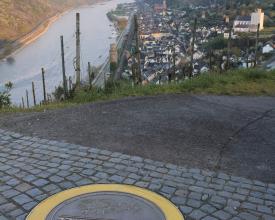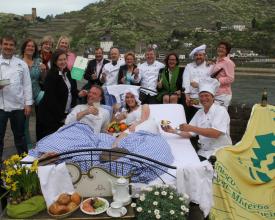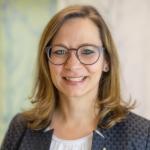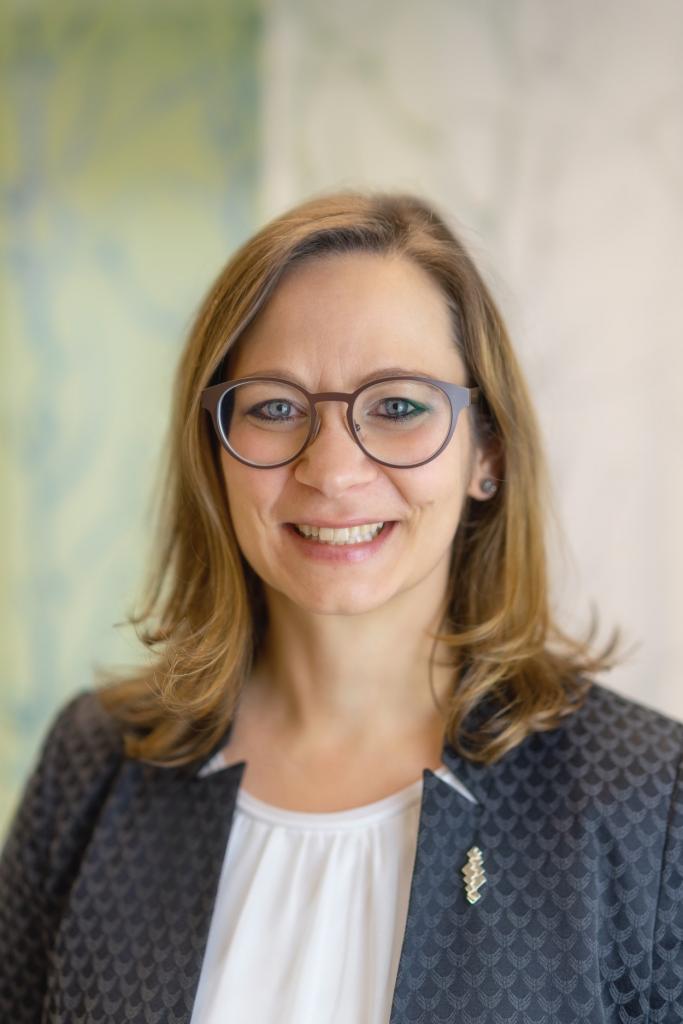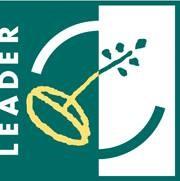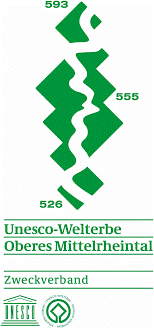
Strengthening communities and stakeholder engagement in the Upper Middle Rhine Valley through participatory governance, awareness raising and quality controls
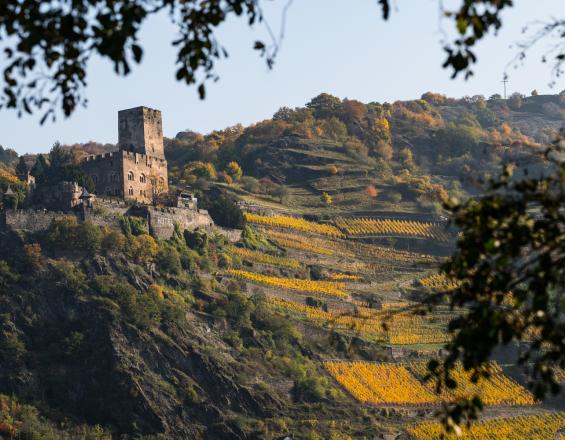
The Upper Middle Rhine Valley is a cultural landscape characteristic for its castles, historic towns and vineyards. In 2002, a 67km stretch of the valley between Bingen, Rüdesheim und Koblenz was inscribed on the World Heritage List for its values as an evolved organic cultural landscape made of 48 small towns, extensive terraced vineyards and the ruins of castles that once secured one of the most important trade routes in Europe. The site is associated with centuries-long history and legends that have exercised a powerful influence on writers, artists and composers throughout time.
The management and conservation of this cultural landscape is highly dependent on the wellbeing and sustainability of its people and communities. The solution focuses on the participatory governance model and various projects created to support local communities and businesses in shaping a virtuous sustainable region.
Context
Challenges addressed
• Environmental challenges: the protection of the natural landscape requires coordinated actions for enhanced adaptation to the effects of climate change and thus the preservation of the regional diversity of agricultural varieties, flora and species;
• Cultural and social challenges: limited participation and awareness of the site’ World Heritage status as well as of its natural and cultural values;
• Economic challenges: the possible stagnation of tourism numbers and of the local tourism services is a potential limit to the sustainability and sustainable economic development of the area; other challenges are posed by proposals for the construction of infrastructures near the World Heritage property of the Upper Middle Rhine Valley.
Location
Process
Summary of the process
The management and conservation of the World Heritage property of the Upper Middle Rhine Valley cultural landscape are directly connected with the wellbeing and sustainability of local communities and local businesses. The governance structure in place for the protection of the site is based on the direct participation of all concerned municipal, district and state authorities united under the Upper Middle Rhine Valley World Heritage Association, in German Zweckverband Welterbe Oberes Mittelrheintal (BB1).
At the site level, the Upper Middle Rhine Valley World Heritage Local Action Group, also known as LAG (BB2); the World Heritage Academy (BB3); and the Welterbe Gastgeber – certified World Heritage Host (BB4) support the protection of this unique cultural landscape fostering the sustainable development and wellbeing of local communities and businesses and shaping a virtuous sustainable region.
Building Blocks
Upper Middle Rhine Valley World Heritage Association
Since 2005, the Upper Middle Rhine Valley World Heritage Association (Zweckverband Welterbe Oberes Mittelrheintal) is in charge of conserving and managing the World Heritage property of the Upper Middle Rhine Valley. It includes representatives from the 52 municipal authorities, 5 districts and the federal states of Hesse and Rhineland-Palatinate. The Association’s structure is divided into five bodies:
• a board in charge of day-to-day business on behalf of the Association;
• a secretariat working as a contact point for all municipalities, as well as dealing with the implementation of plans and projects;
• an Advisory Board, an interdisciplinary expert group providing advice to five specific themes - landscape and viticulture, architecture and urban development, tourism, city and regional economy, as well as art, light and architectural conservation;
• two permanent working groups, one focused on the safeguarding, maintenance and development of the cultural landscape, and the second one on tourism which is held in cooperation with providers of tourism services.
The Association meets twice a year to decide on the key planning and operational matters, including the annual budget and to ensure that the association's fields of action is in line with existing World Heritage guidelines.
Enabling factors
The Association is a voluntary association established under public law as a corporation. It operates under the premises of shared agreement, which defines the members of the association and their roles in it and the operational framework of the association. Municipalities that are member to the association pay an annual contribution which amounts to € 0,50 per inhabitant (except for Koblenz which contributes with a lump sum of € 50.000).
Lesson learned
• The structure of a formal association allows for major coordination between all stakeholders involved in the management and conservation of the World Heritage property of the Upper Middle Rhine Valley.
• The association offers a solid platform for the improvement of the governance of the site. Decision-making is widely shared among stakeholders particularly in relation to overarching managerial decisions such as financial allocation, budgeting and annual planning.
• Fixed contribution by all participating municipalities allows for improved medium- and long-term financial planning for day-to-day activities as well as for specific projects and programs .
Ich weiß nicht, warum das gelb markiert ist ? Da müsstest du noch einmal nachfragen
Upper Middle Rhine Valley World Heritage Local Action Group
The Upper Middle Rhine Valley World Heritage Local Action Group (LAG) is the steering body of the LEADER project. The group includes members from 28 local organizations representing public authorities, the economic and social sectors, and civil society.
The LAG implements the Local Integrated Rural Development Strategy (LILE), which sets objectives for the funding period between 2014-2020 and formulates fields of action for the strategy around four themes:
- liveable settlements of the Middle Rhine;
- sustainable tourism and economic structures;
- preservation and sustainable development of the cultural landscape of the area;
- society and communities in the World Heritage property.
Members of the LAG advise and decide on projects that are submitted to the calls for funding on the basis of their pertinence with the LILE strategy.
The area of interest of the LAG is very similar to that of the UNESCO World Heritage as it includes the associated communities of the Rhine-Nahe, St.Goar-Oberwesel and Loreley and parts of the Rhine-Mosel municipalities and parts of the cities of Boppard, Lahnstein, Bingen and Koblenz.
The LAG also exchanges with national and transnational partner regions on joint cooperations. Currently,
the LAG is working on the application for a new funding period 2023 – 2029.
Enabling factors
The action groups has been created in relation to the EU funded project LEADER (from the French Liaison entre actions de développement de l´économie rurale) which focuses on the establishment of models and projects to strengthen the sustainability of regions and their local economy. The LAG is in charge of implementing the LEADER action in the region. The LAG comprises a set of relevant members organizations working and acting on all key sectors and aspects of local development.
Lesson learned
- LEADER funding is an effective tool to initiate and finance numerous projects within the world heritage region, but the bureaucratic effort surrounding the application for new funding periods and the management of the LEADER funds should not be underestimated.
- In addition to the LEADER funds, the LAG has been managing and supervising the federal funding program “Regionalbudget” and the state funding program “Ehrenamltiche Bürgerprojekte” (voluntary citizen projects) for several years now. This enables the LAG to support and fund a wide range of projects.
World Heritage Academy
The World Heritage Academy (Welterbe Akademie) is a training opportunity created to raise awareness on the OUV of the World Heritage property, other heritage values and the wider heritage of the Upper Middle Rhine Valley. The academy aims at fostering local traditional knowledge, professional and practical expertise to build capacity in local communities and local actors living and working within and nearby the World Heritage site. The academy organizes seminars and workshops in cooperation with local artisans and professionals as well as experts in the field of restoration and heritage, and topics treated vary from important and central themes like tourism, green energy, and specific building and conservation techniques like the construction and restoration of dry stone walls.
The Academy offers inclusive and innovative means of engagement for local stakeholders and actors to build knowledge and capacities to face future challenges.
Enabling factors
The World Heritage Academy was born within the framework of the LEADER project (BB2), an EU-funded initiative aimed at initiating pilot projects to strengthen the sustainability of territorial regions and local economies.
45% of the costs of implementation of the Academy were sustained by the LEADER project.
Lesson learned
Due to the Corona pandemic, the start of the World Heritage Academy was postponed. We are optimistic that we can start the project in 2021.
Welterbe Gastgeber – certified World Heritage Host
World Heritage Hosts (Welterbe Gastgeber) are certified quality hosts providing accommodation and services inside the World Heritage property of the Upper Middle Rhine Valley. The programme was initiated in 2007 by the Upper Middle Rhine Valley World Heritage Association with the aim to improve the local tourism offer and avoid the loss of quality in the services provided. Today 18 businesses are certified as World Heritage Hosts. They are known for their high quality accommodation and services. They also act as ambassadors for the region having exceptionally knowledge about the many castles, legends, sights and adventure opportunities in the region as well as local products, including wine and cherries.
The certification is awarded to businesses that play a key role in the promotion of the wider World Heritage area on the basis of four criteria: quality of information and communication on the World Heritage value; active participation in local networks; quality of the products and services provided; relevance in relation to the World Heritage status.
In order to obtain the certificate, local hospitality businesses need to be certified by a national quality procedure (Service Quality Germany) and/or graded in accordance to the DEHOGA standards (German Hotel and Catering Federation).
Enabling factors
The application for the certification is managed by the Upper Middle Rhine Valley World Heritage Association and the criteria for the award of the certificate have been developed by the tourism working group of the Association together with the European Institute of Tourism/Europäisches Tourismus Institut GmbH (ETI) in Trier.
Lesson learned
- The Word Heritage Host certification has helped create greater awareness for the quality of services and customer experiences.
- The project has brought together competing businesses and enabled them to learn from each other. As a result, businesses have benefited from the exchange and improved their services.
- The Upper Middle Rhine World Heritage Association is not a touristic marketing organisation. Therefore, there are limitations in the marketing of the World Heritage Hosts.
Resources
Impacts
- Environmental: the solution contributes to preserving local biodiversity by promoting agricultural products typical of the region such as viticulture and fruit growing (e.g. cherries);
- Cultural and social: strengthening participatory approaches through the establishment of thematic working groups and networks operating in various aspects of management, conservation and local sustainable development; building local capacities on local traditional knowledge (e.g. dry stone walls, cherry cultures) and new technologies (renewable energy); raising local, national and international awareness on the values of the region and the World Heritage status.
- Economic: strengthening the local tourism industry with the creation of a quality award certification for local hospitality businesses providing high quality services and raising awareness on the values of the World Heritage property of the Upper Middle Rhine Valley and its Outstanding Universal Value; promotion of quality experiences and products from the region; enhancing local economic capacities and sectors through research and allocation of development funds.
Beneficiaries
The main beneficiaries of this solution are local communities and business owners living or located inside and nearby wider region of the Upper Middle Rhine Valley. The solution also provides benefits to those visiting the heritage place.
Sustainable Development Goals
Story
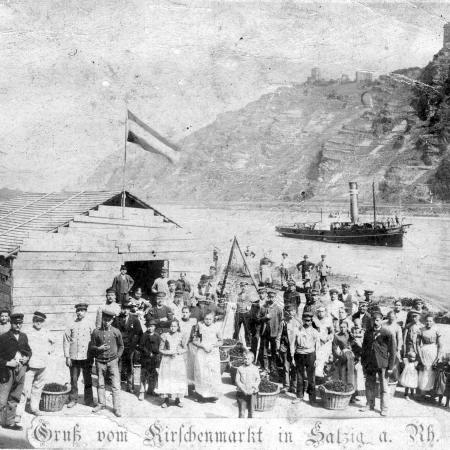
“Middle Rhine Cherries”
The Upper Middle Rhine Valley looks back on a very long cherry tradition. In AD 60, the Romans already reported that cherries were cultivated and in the centuries that followed cultivation was continuously intensified. Until the middle of the 20th century, Middle Rhine Cherries were a real export hit. The cherry region was thriving with more than 370.000 cherry trees. Often unique varieties that were only grown in the region. The small, round fruit influenced whole generations and the cultivation shaped the landscape of the Upper Middle Rhine Valley.
But since the 1960s, cherry cultivation has rapidly declined. Competition from imported cherries grew and the market required large quantities in consistent quality. Uniformity above diversity. Unified flavour instead of taste explosion. Today only a handful of fruit farmers exist in the Upper Middle Rhine Valley and the one-of-a-kind cherry varieties are threatened by extinction.
Coordinated by the Upper Middle Rhine World Heritage Association, the initiative "Middle Rhine Cherries" brings together dedicated cherry-lovers and producers from the region to preserve the cherry diversity in the region. By creating and selling high-quality products containing Middle Rhine Cherries, the seasonal fruit can be offered all year round. Furthermore, old and rare varieties are prevented from extinction, which in conclusion also helps maintaining the beautiful landscape.

